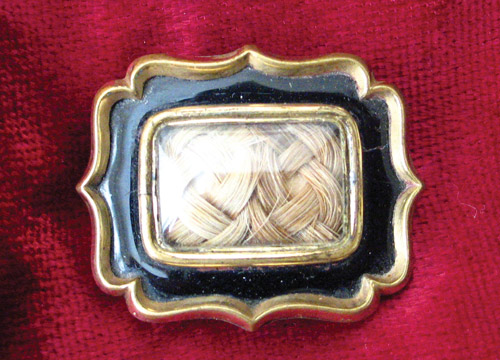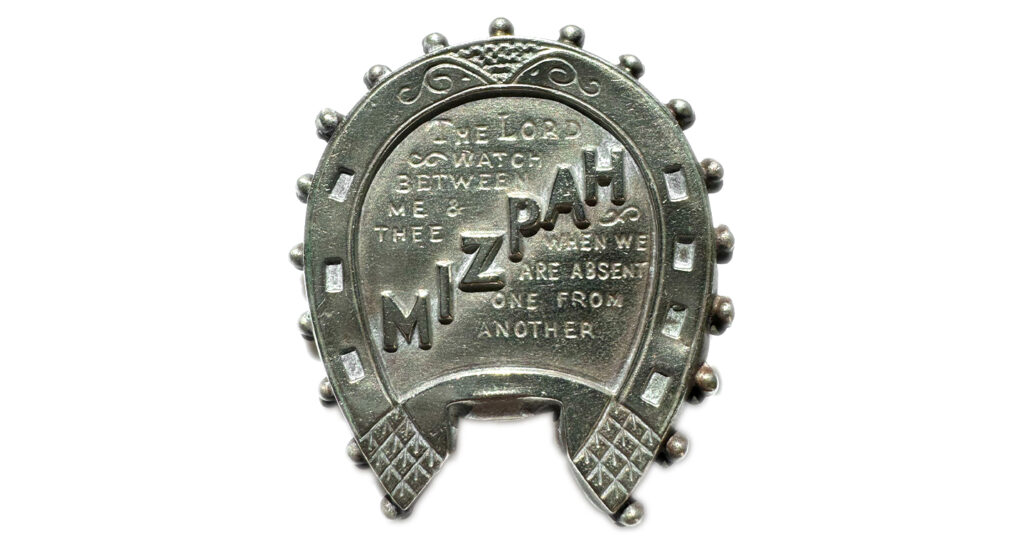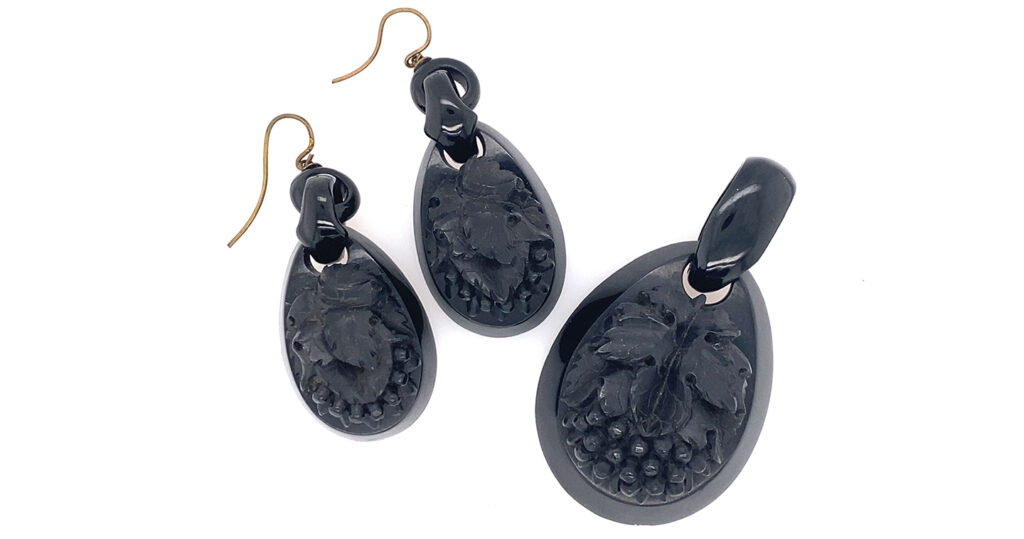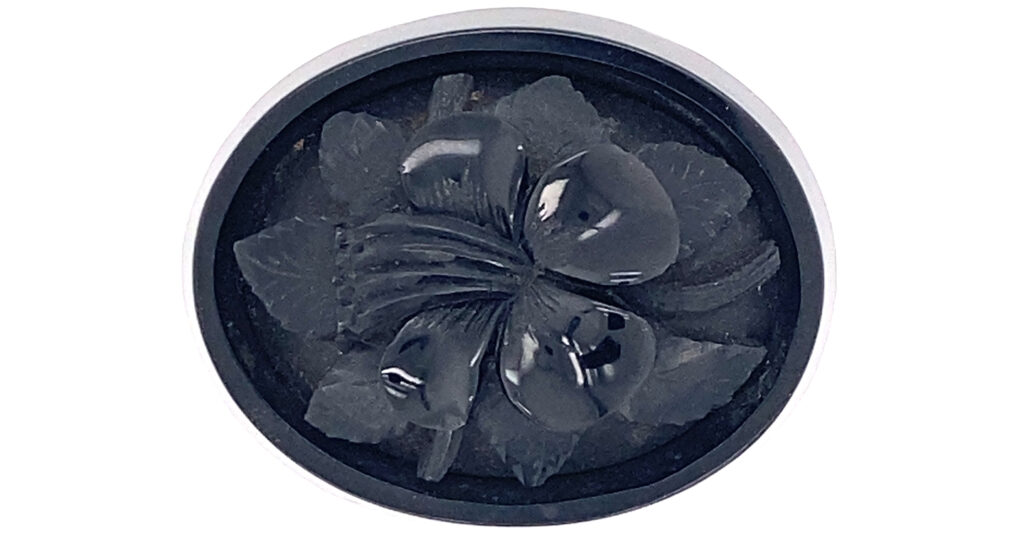Simplification of Gothic Revival Design in a Brooch
The 1840s saw a period of jewellery design standardisation, mostly due to the Gothic Revival period entering the mainstream of fashion post George IV and William IV and the following of this by Victoria, who instilled conformity and strength within her burgeoning reign and the British Empire. With the Reform Act of 1832 increasing the size of electorates, with a high level of urbanisation due to the Industrial Revolution, a social movement that empowered the individual took the focus away from the upper classes, which provided the primary channel of fashion and its set style.
Understanding that there was a higher level of production and a population growing to match, we can look at a brooch like this and understand why it was necessary to its culture and why it was of its quality.
The reason for its necessity is due to its use in the rising culture of mourning that was court mandated. Mourning regulation went through different permeations in the 19th century and became longer and more rigid. It was on the 7th of November, 1817 upon the death of Princess Charlotte that Lord Chamberlain ordered official Court mourning: ‘the Ladies to wear black bombazines, plain muslins or long lawn crape hoods, shammy shoes and gloves and crape fans. The Gentlemen to wear black cloth without buttons on the sleeves or pockets, plain muslin or long lawn cravats and weepers [white cuffs] shammy shoes and gloves, crape hatbands and black swords and buckles.’ For undress wear, dark grey frock coats were permissible. The Second stage was decreed two months later, with the allowance of black silk fabric, fringed or plain linen, white gloves, black shoes, fans and tippets, white necklaces and earrings, grey or white lusterings, damasks or tabbies and lightweight silks for undress wear. Men’s dress was unchanged. The third stage allowed women to wear black silk and velvet, coloured buttons, fans and tippets and plain white, silver or gold combination coloured stuff with black ribbons. Men could wear white, gold or silver brocaded waistcoats with black suits. The rules set by Lord Chamberlain crossed Europe, the United States (from the 1860s / 70s) and colonial territories, but Court mourning was longer than General mourning. General mourning was growing in popularity due to the accessibility of mourning costume and the cost.
With an increased mortality rate during the 1840s, much of this being from the higher levels of factory workers at young ages and the Irish Famine; the statistics are even more alarming;
“In the England of 1840 the average age of death was twenty-nine, today [1942] it is fifty-eight. …the babies of 1840 suffered an appalling mortality. To-day one child in seventeen dies before it is a year old, but in 1840 the figure was about one in six, and about a third of the children born died before the age of five….Infants died of convulsions, diarroea, and atrophy, the latter being a polite term for starvation.”1
And with this brooch, we have a piece of design that had not reached the large sizes of the 1850s (the 1854 Hallmarking Act allowing for lower grade alloys hadn’t been implemented, leading to larger and lighter jewels), so it is a piece dedicated to a child in a time of high mortality and social growth and standardisation. For something so simple, it resonates today and speaks loudly.







